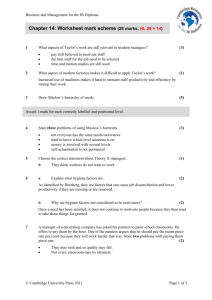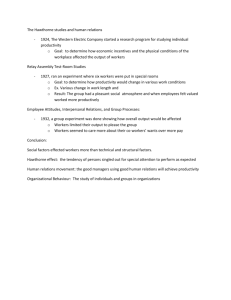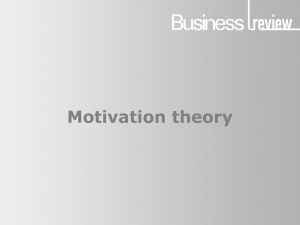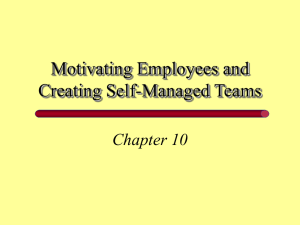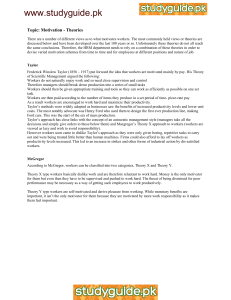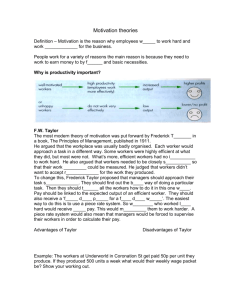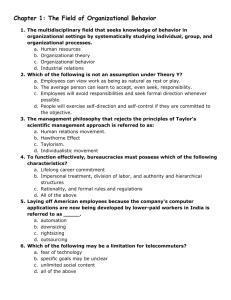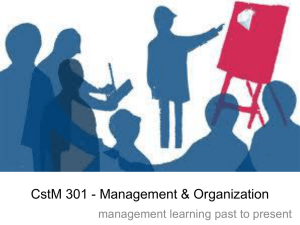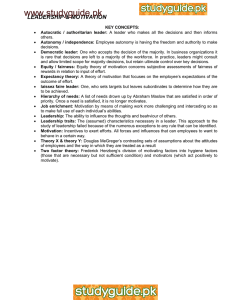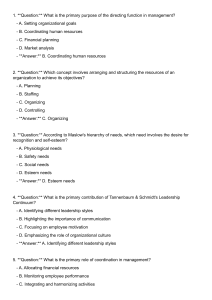Human Relations Approach
advertisement
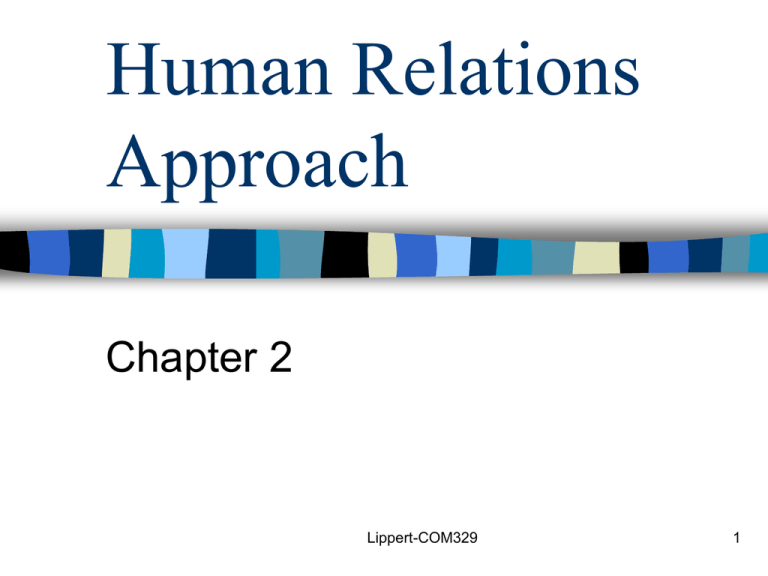
Human Relations Approach Chapter 2 Lippert-COM329 1 Reacting to the Classical Approach Although many in industry were quick to embrace the classic theoretical approach, its implementation commonly left employees unfulfilled. The Hawthorne Studies only served to raise further questions concerning the employee’s role in the organization. These events then set the stage for the emergence of another organizational communication approach: the Human Relations (HR) approach. Lippert-COM329 2 Classical Approach Doesn’t: Account for individual needs of employees Non-financial reward Social interaction Lippert-COM329 3 Making a Case for Human Needs: The Hawthorne Studies The Hawthorne Studies entail a research program conducted by Elton Mayo and his colleagues at the Western Electric Plant in Cicero, Illinois from 1927 to 1933. The plant’s manager asked Mayo and his team of researchers to help increase employee morale and overall productivity at the Hawthorne Plant. Their findings asserted that employee morale and productivity improved when workers were allowed to interact and an overseer was present. Lippert-COM329 4 Hawthorne Studies Influenced transitions from classical approach to human relations approach – Illumination Studies • Mayo interested in how changes in work environment would impact productivity • Found unexpected results – Hawthorne Effect • The more attention given to someone, the more likely their behavior will change • Social factors influence productivity Lippert-COM329 5 Maslow’s Hierarchy of Needs Theory Abraham Maslow, a social scientist, developed his hierarchy of needs theory over a 25 year period beginning in the early 1940s. According to Maslow, humans seek to fulfill needs at several levels (hierarchy of prepotency). Employees seek to first have their most primal needs met before seeking fulfillment of their secondary or higher level needs. Lippert-COM329 6 Maslow’s Hierarchy of Needs Theory Physiological – “living wage” to purchase food and clothing Safety – Free from danger-wages to procure shelter Affiliation – Need to belong I social relationships with coworkers Esteem – Sense of achievement and accomplishment – Compensation and reward Self-Actualization – Job that allows growth and creativity Lippert-COM329 7 Herzberg’s MotivationHygiene Theory Frederick Herzberg, a mental health specialist, developed his theory between the early 1950s and early 1970s. Most simply Herzberg argues that satisfaction and dissatisfaction are not polar opposites of each other. He advances that satisfaction and dissatisfaction are distinct concepts impacted by either either internal factors (e.g., achievement, responsibility) or external factors (e.g., working conditions, salary), respectively. Lippert-COM329 8 Herzberg’s MotivationHygiene Theory Set of workplace characteristics that make person/worker satisfied – Hygiene factors • Aspects of work that keep a person from being unsatisfied and unhappy – Motivators • Aspects of work that keep a person satisfied and happy Lippert-COM329 9 McGregor’s Theory X and Theory Y Douglas McGregor, a professor at MIT, developed these theories to explain two divergent schools of managerial thought. Theory X has three propositions: a. Management has the greatest organizational responsibility. b. Management must control and motivate employees by modifying employee behavior. c. Employees are passive entities that must be controlled. Lippert-COM329 10 Theory X then advances the following postulates: The average human is lazy. The average human lacks ambition. The average human is self-centered. The average human resists change. The average human is not bright. Lippert-COM329 11 In contrast, Theory Y advances the following five assumptions Humans desire to exert physical and mental effort. External control is not the only way to direct employees. Commitment to a goal is based on rewards for achievement. Most everyone can be creative. Most employee potential is only minimally tapped. Lippert-COM329 12 Human Relations Approach Need for attention Social interaction Individual achievement Intended as a move away from the “organization as machine” metaphor Management recognizes employees as humans with needs rather than cogs of a machine Lippert-COM329 13 Communication Implications Content-task related but includes maintenance Direction-vertical but horizontal is encouraged Channel-emphasizes variety Style-informal, less informal Lippert-COM329 14 Summary Hawthorne effect- social factors influence productivity. Maslow’s theory- 5 levels, lower needs must be met before higher needs. Herzberg’s theory- hygiene factors & motivators. McGregor’s theory of X & Y Human Relations approach- employees are valued. Lippert-COM329 15 Case Study: Motivation at Healthtime Fitness Club If you were Jenny, what would you say to Matt? What Factors have led to his difficulty in motivating his employees? How would human relations theorists analyze Matt’s problem (needs, m/h factors, assumptions)? What communication strategy would you recommend to Matt to deal with the situation? Lippert-COM329 16
